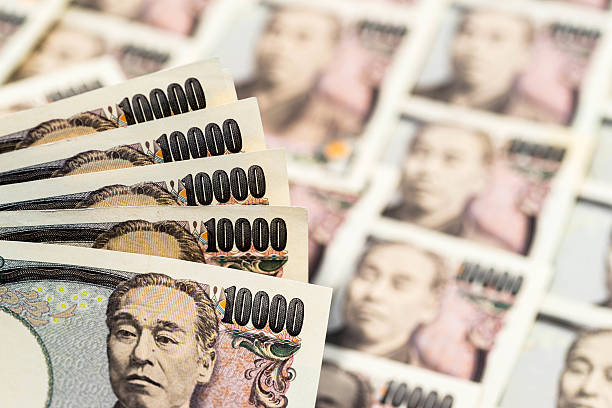Japanese Yen weakens back below 150.00 against USD, seems vulnerable
- Markets in 2026: Will gold, Bitcoin, and the U.S. dollar make history again? — These are how leading institutions think
- Trump says Venezuela's Maduro deposed, captured after US strikes
- Bitcoin Price Surges To $90,000. U.S. Arrests Venezuela's President, Triggers Bull Frenzy
- After Upheaval in the World’s Largest Oil Reserve Holder, Who Will Emerge as the Biggest Winner in Venezuela’s Oil Market?
- U.S. to freeze and take control of Venezuela's Bitcoin holdings after Maduro capture
- Ethereum Price Forecast: Accumulation addresses post record inflows in December despite high selling pressure

■ The Japanese Yen drifts lower on Friday and retreats further from over a two-week high.
■ The BoJ policy uncertainty and the risk-on environment undermine the safe-haven JPY.
■ Firming expectations for a June Fed rate cut move might cap the upside for the USD.
The Japanese Yen (JPY) strengthened sharply against its American counterpart and shot to over a two-week high on Thursday after the Bank of Japan (BoJ) board member Hajime Takata dropped the clearest hint of a looming rate hike. That said, the BoJ Governor Kazuo Ueda sounded a bit cautious and tempered speculations about an imminent shift in the policy stance. Moreover, investors seem convinced that a recession in Japan could force the BoJ to delay its plan to pivot away from the ultra-loose policy. This, along with an extension of the recent risk-on rally in the equity markets, kept a lid on any further gains for the safe-haven JPY.
Apart from this, the emergence of some US Dollar (USD) buying assisted the USD/JPY pair to rebound around 75 pips from the 149.20 area and gain some positive traction during the Asian session on Friday. Meanwhile, the US Personal Consumption Expenditures (PCE) Price Index for January matched expectations and showed that the annual increase in inflation was the smallest in nearly three years. This reaffirmed market bets that the Federal Reserve (Fed) will start cutting interest rates at the June policy meeting. This could hold back the USD bulls from placing aggressive bets and cap any further upside for the currency pair.
Daily digest market movers: Japanese Yen drifts lower despite hawkish BoJ talk
The Bank of Japan board member Hajime Takata said that the central bank must consider an exit from its ultra-loose policy as the achievement of the 2% inflation target is becoming within sight and boosted the Japanese Yen on Thursday.
In contrast, the BoJ Governor Kazuo Ueda said that it was too early to conclude that inflation was close to sustainably meeting the central bank's 2% target and stressed the need to confirm whether a positive wage-inflation cycle would kick off.
A private-sector survey showed this Friday that Japan's factory activity shrank at the fastest pace in over three-and-a-half years in February, with the final au Jibun Bank Japan Manufacturing PMI shrinking to 47.2 from 48.0 in January.
The data suggested that weakening demand has worsened the economic outlook and comes on top of an unexpected economic contraction during the fourth quarter, which could delay the BoJ's plans to tighten its policy in the coming months.
The US Dollar attracted fresh buying after an initial dip that followed the release of the US inflation data and registered its second straight monthly gain, assisting the USD/JPY pair to stage a goodish bounce from over a two-week trough.
The Core US PCE Price Index – the Federal Reserve's preferred inflation gauge that excludes food and energy – climbed 0.4% in January and the yearly rate eased to 2.4% from 2.6%, matching estimates and reaffirming June rate cut bets.
Separately, the US Department of Labor reported that the number of American citizens applying for unemployment insurance benefits for the first time increased more than expected, by 13K to 215K in the week ending February 24.
Atlanta Fed President Raphael Bostic said that it would probably be appropriate to reduce the policy rate in the summertime and that the last few inflation readings had shown that it is going to be a bumpy path back toward the 2% target.
San Francisco Fed President Mary C. Daly noted that the US central bank shouldn't hasten to reduce interest rates as the economy remains firm and sees little risk of faltering, though is ready to do so when the macro data demands it.
Cleveland Fed President Loretta J. Mester said that inflation remains a challenge that the US central bank needs to overcome, but rate cuts should resume later this year as long as the incoming economic data gives enough room to operate.
New York Fed President, John Williams, acknowledged that the resilience of the US economy is remarkable and expects the US central bank to cut interest rates later this year, but doesn't see the sense of urgency for immediate action.
Traders now look to the US economic docket, featuring the release of the ISM Manufacturing PMI and the revised Michigan Consumer Sentiment Index, which, along with Fed speak, should influence the USD and provide some impetus.
Technical analysis: USD/JPY needs to break through a short-term trading range
From a technical perspective, any subsequent move up is likely to confront stiff resistance near the 150.65-150.70 region. This is closely followed by a multi-month peak, around the 150.90 zone touched on February 13, which if cleared decisively will be seen as a fresh trigger for bullish traders. Given that oscillators on the daily chart are holding comfortably in the positive territory, the USD/JPY pair might then climb to the 151.45 hurdle en route to the 152.00 neighbourhood, or a multi-decade peak set in October 2022 and retested in November 2023.
On the flip side, the 150.00 psychological mark now seems to protect the immediate downside, below which spot prices could slide back towards the overnight swing low, around the 149.20 area. Some follow-through selling, leading to a subsequent break below the 149.00 mark, might shift the bias in favour of bearish traders and make the USD/JPY pair vulnerable.
Read more
* The content presented above, whether from a third party or not, is considered as general advice only. This article should not be construed as containing investment advice, investment recommendations, an offer of or solicitation for any transactions in financial instruments.

